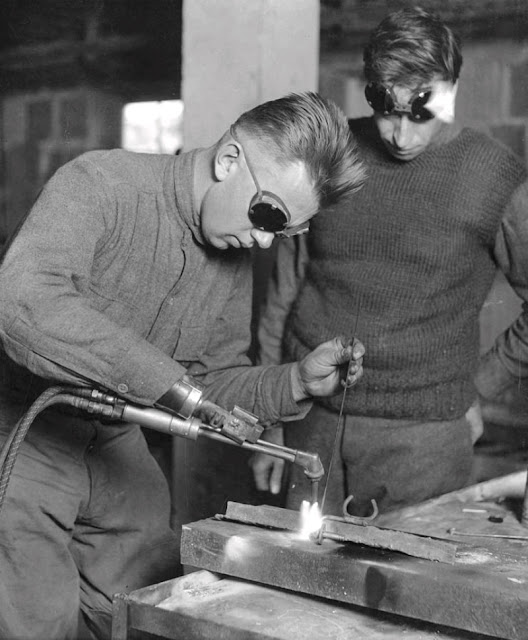In the wake of World War I, as the world grappled with the aftermath of a global conflict, a remarkable story of resilience and innovation emerged from the life of a veteran. In 1919, one such soldier, having returned from the battlefields with a prosthetic arm, demonstrated the extraordinary power of human determination and adaptation.
This veteran, whose bravery had been tested on the front lines, now faced a new kind of challenge in civilian life. The prosthetic arm, a marvel of early 20th-century engineering, was more than just a tool—it was a symbol of his courage and ability to forge a new path despite the scars of war. Designed with precision and ingenuity, the arm was equipped to aid in everyday tasks, allowing him to engage in work that demanded skill and dexterity.
In the bustling environment of a workshop or perhaps a factory, the veteran’s prosthetic arm became an extension of his willpower. As he maneuvered through his tasks, the arm’s joints and mechanisms worked seamlessly with his remaining strength. Each movement was a testament to his adaptability and the relentless pursuit of normalcy in a world forever changed by the war.
His colleagues and peers looked on with a mixture of admiration and respect. Here was a man who had once faced the horrors of battle but now faced the trials of reintegration with unwavering resolve. His presence in the workplace was not just about performing a job but also about inspiring others with the sheer will to overcome adversity.




.jpg)


.jpg)


0 comments:
Post a Comment